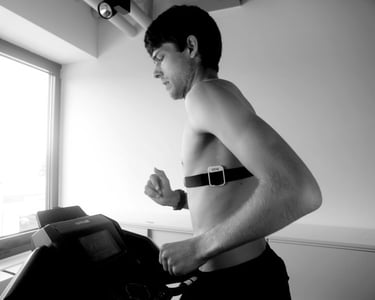Research Applications
Learn about the diverse applications of Calera® across various research fields.
Why should I use Calera® Research?
Measuring core body temperature in real time with high accuracy has traditionally been impractical outside of clinical settings. Methods such as pulmonary artery catheters, urinary bladder, or esophageal probes are limited to hospitals. Rectal thermometers are often uncomfortable for participants, while ingestible thermometer pills are costly and require precise timing. Other available devices cannot provide continuous and accurate monitoring.
With Calera®, continuous core body temperature monitoring becomes accessible for a wide range of applications. The devices are currently used across multiple fields, and we would be happy to discuss how this technology could support your specific needs.
Application Examples
Sleep Research
Sleep and circadian rhythms are tightly linked to core body temperature, yet continuous, non-invasive monitoring of this vital marker has long been a challenge outside of controlled laboratory settings. With Calera®, scientists can now explore these dynamics in real-world environments, offering fresh perspectives on human physiology.
Continuous core body temperature tracking enables new investigations into how circadian fluctuations influence sleep quality, recovery, alertness, and performance. Researchers can examine temperature shifts across different chronotypes.
By providing precise and non-invasive monitoring, Calera® allows scientists to move beyond the sleep lab, sparking new avenues of discovery in circadian biology and human performance.
.jpg?width=2000&height=1125&name=woman_sleeping_1%20(1).jpg)
Sport Performance

Understanding how the body responds to heat stress is critical for optimizing performance and safety in athletes.
With Calera®, scientists and coaches can continuously and non-invasively monitor core body temperature in real time during exercise & recovery.
This enables Heat Acclimatization Studies, Performance Optimization, Hydration & Cooling Strategies, and Individualized Training Programs
By bringing research-grade accuracy into the field, Calera® helps bridge the gap between laboratory research and practical applications in elite sports and exercise physiology.
Occupational Health
Workers in demanding environments are at constant risk of heat stress and related health complications. Until now, accurately monitoring core body temperature in these settings has been difficult, as most methods are invasive, impractical, or unsuitable for real-world use.
Calera® Research enables continuous, non-invasive, and real-time monitoring of core body temperature during active duty, providing valuable insights into Heat Stress Prevention, Protective Gear Evaluation, Workload & Shift Management, Safety Protocol Development.
By delivering accurate measurements in the field, Calera® helps researchers, occupational health specialists, and safety officers better understand the risks of heat exposure and design interventions that protect worker health and performance.

Emerging Research Topics

Core body temperature is a fundamental physiological marker, yet its continuous and non-invasive measurement has only recently become feasible outside clinical environments. This opens the door to a vast range of new research directions.
With Calera®, scientists can now investigate how core temperature dynamics influence performance, recovery, and health across diverse contexts. Just as importantly, entirely new fields of study are emerging. For example, in women’s health, continuous monitoring allows researchers to explore thermal patterns linked to hormonal cycles and pregnancy, areas that have historically been underrepresented in scientific literature.
We believe core body temperature is a powerful, underutilized biomarker. By making accurate, real-world monitoring possible, Calera® invites the scientific community to ask new questions, test new hypotheses, and uncover insights that were previously out of reach.
